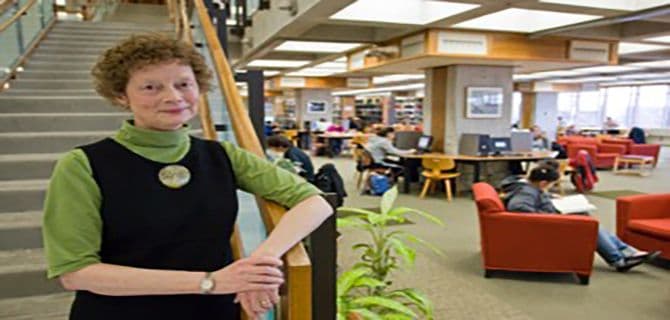How has your job changed over the years? What is it like being a 21st-century librarian compared to the more traditional image most people have in their minds? Lisabeth Chabot (College Librarian, Ithaca College): The move from ownership of content to curating access to content has impacted all areas of library work. I like to […]

How has your job changed over the years? What is it like being a 21st-century librarian compared to the more traditional image most people have in their minds?
Lisabeth Chabot (College Librarian, Ithaca College): The move from ownership of content to curating access to content has impacted all areas of library work. I like to say that we have moved from a “preserve and protect” model to one of enhancing the discoverability of library resources. Most academic libraries are challenged to continue to build collections in view of flat funding and escalating resource costs. Resource sharing and consortial collection development projects have taken on greater significance.
What are some emerging trends in the library world?
Lisabeth Chabot: More academic libraries are investing in ebooks, although most licensing restricts access and the sharing of content via interlibrary loan. Libraries are also experimenting with demand-driven acquisitions, whereby a certain number of uses triggers the purchase of an item. A growing area of interest and focus for many research libraries is the development of research data services. With the federal mandate to increase access to federally funded scientific research, academic libraries are collaborating in the development of cross-institutional digital platforms for disseminating scholarly projects in multiple formats. Data curation and data management services are emerging as exciting roles for academic librarians to leverage their expertise and experience in support of scholarly communication, the emergence of altmetrics, and open-access publishing.
How do the changing needs of researchers and students impact your work?
Lisabeth Chabot: Librarians recognize the power of collaboration – with other campus units and other libraries. As new library space is built and/or existing space is renovated, the focus is on the user experience and teaching/learning success. Writing support, academic advising peer tutoring, and faculty development services are co-locating in the library’s physical space. Recognizing that libraries are often a hub for students to work on individual and group projects/research, front-line information technology support services are provided in many libraries. Libraries are also creating makerspaces and fablabs (fabrication spaces) with 3D printing and other technology support.
What organizations and/or associations have you found most valuable as a member and as a participant?
Lisabeth Chabot: My go-to organization is the Association of College and Research Libraries (ACRL) which develops on-target training, information, and networking for academic librarians. ACRL is focused on demonstrating the value of academic libraries in support of institutional mission, scholarly communication, and student learning. These strategic priorities enhance the success of academic and research libraries.
See earlier entries in this series: